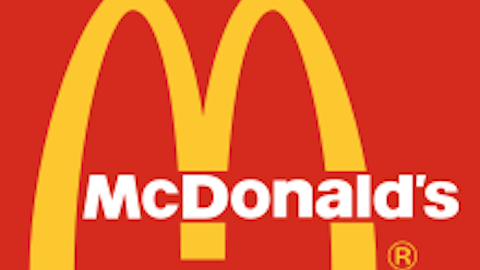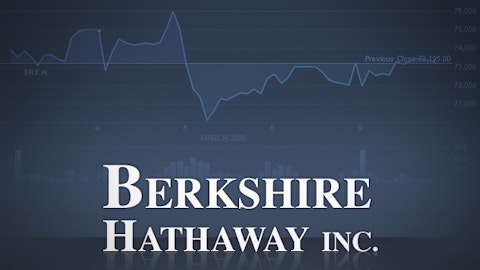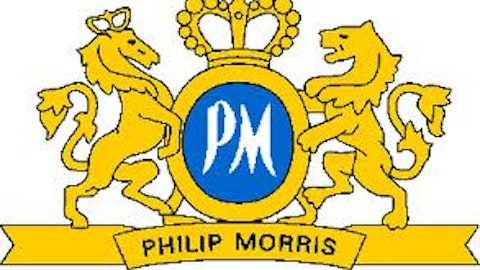Lets examine the recent performance of dividend-paying companies relative to their non-dividend paying and dividend-cutting peers within the S&P 500 Index. I will take the S&P 500 index members and then divide those names into four groups to analyze the companies that pay and raise their dividends versus those that have cut or do not pay a regular dividend. Afterwards, I will choose my favorite among the four groups.
Group 1: Companies that don’t pay a regular dividend
The non-dividend payers lagged the dividend growers in total return by an average of less than 100 basis points, despite a yield advantage of 2.5% versus zero. The strength shown by the non-dividend paying companies indicates that the market is in “growth” mode, giving a lot of weight to future cash flows against present cash flows.

The best investor in history has been collecting great businesses with huge barriers to entry for five decades now. Warren has done a better use of the cash generated by his company than anyone else could have done. Not paying a dividend ended up creating value. That said, at some point Berkshire Hathaway Inc. (NYSE:BRK.A) will start paying dividends. But now, trading at 2013 19x P/E and growing sales at a 15% year-over-year (Y-o-Y) rate, I am sure Berkshire Hathaway Inc. (NYSE:BRK.A) is the best non-dividend payer you could find.
Group 2: Companies that recently initiated a dividend
Among this group you can find companies such as Apple Inc. (NASDAQ:AAPL) , which first declared a dividend in March 2012, or older firms that may have discontinued their dividends at some point and then reinstated.
This is the best-performing segment among all four groups. This group led all others in both simple price returns (21.4%) as well as in total return (23.9%) despite having the lowest average yield among the three dividend-paying groups (currently 1.7%).
This implies that companies that recently initiated a dividend appear poised to outperform their peers if the return pattern over the past year continues into the future. As the markets are in “growth” mode rather than in “value” mode, investors are putting a lot of attention on future cash-flows.
My favorite pick among this segment is Apple Inc. (NASDAQ:AAPL). The company pays a 2.8% dividend yield, and is down by almost 30% since last year. Trading at an ex-cash 2013 price-to-earnings multiple of 6.7x, I think Apple Inc. (NASDAQ:AAPL) looks deeply undervalued while it is generating more than $50 billion a year in operating cash flow.
Of course, the market does not think that cash flow is sustainable, otherwise, the price of the company would be significantly different. That said, I consider that the market is over-pricing the probability of Apple Inc. (NASDAQ:AAPL) losing its market leadership and, hence, its cash-flow-generating capabilities. This is the main reason explaining why Apple is my favorite pick among the group. My bet is that Apple Inc. (NASDAQ:AAPL) will keep generating cash and increasing its dividend.
Group 3: Companies paying a regular dividend that have for three years or longer but have zero or negative three-year
dividend growth rates
As one might imagine, this is the worst performing of the four groups over the past year. If I had to pick a company within this poor-performance segment, I would choose United States Steel Corporation (NYSE:X) . The steel company pays a 1.1% dividend yield and is down by 40% Y-o-Y; but the steel sector should start performing better as the US economy gains traction hand in hand with the housing sector. United States Steel Corporation (NYSE:X) trades at 2013 8.4x EV/EBITDA and I expect the company to start producing earnings again by next year.
Group 4: Companies currently paying a dividend and with positive three-year dividend growth rates
As I mentioned before, this is the second-best performing group of the four. These 315 companies (the largest of all four segments) pay an average yield of 2.5% compared to approximately 2.1% for the S&P 500 index, and while they lagged Group One (the non-dividend payers) in price appreciation, they overtook Group One on a total-return basis. The dividend growers averaged total return gains of 21% compared to the average price/total return of 20% among the non-dividend payers.
My favorite pick among this 315 companies is Altria Group Inc (NYSE:MO), which pays a 4.8% dividend yield and has been growing its dividend by 8.6% in the last three years. Altria Group Inc (NYSE:MO) is a strong global consumer-goods company. As such, it is a collection of sustainable cash-rich businesses. Besides, its interests are not only in the tobacco business but also, among others, in the beer business: Altria owns +28% of the world’s second-biggest brewer, SABMiller.
Trading at 2013 15x P/E, the parent company of Philip Morris USA, U.S. Philip Morris Capital, is a great value bet among the dividend growers.
Bottom line
The fact that the two best-performing groups in the study were those companies with recently declared dividends and those companies that have a long history of paying and growing their dividends highlights the importance of dividend payments to achieve total returns. I have long favored those companies that not only pay dividends but that also have shown consistent and sustainable dividend growth. That said, sometimes companies without a dividend history can also be valuable investments. Berkshire Hathaway Inc. (NYSE:BRK.A) is the epitome of such cases.
The article Do High Dividend Payers Perform Better? originally appeared on Fool.com and is written by Federico Zaldua.
Federico is a member of The Motley Fool Blog Network — entries represent the personal opinion of the blogger and are not formally edited.
Copyright © 1995 – 2013 The Motley Fool, LLC. All rights reserved. The Motley Fool has a disclosure policy.



